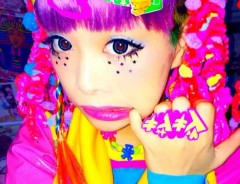- Source:
- Karakuri
- Tags:
- Japan / Karakuri Puppets / Robot / Technology
Related Article
-

Kittens Discover Heated Foot Warmer And Use It Way Better Than Humans Do
-

Keep Your Phone Scratch-Free With Mouthwatering Food Sample iPhone Cases
-

Chupa Chups releases “liquid lollipop” beverages in Japan
-

Tokyo’s number one souvenir Tokyo Banana gets ice cream transformation
-

Nara’s Famous “Child Granting” Temple Reveals The Nature Of Japanese Power Spots[PR]
-

Cute Or Too Much? Japanese Model’s Makeup Tutorial Is An Explosive Pop Of Color



Japan takes its Robotics industry very seriously — just ask one of the country’s most beloved helper-robots, Pepper.
But in all seriousness, there are over a quarter of a million industrial robot workers said to be currently employed in the country, and the number is constantly growing.
It would be a fallacy, however, to think of Japan’s advanced robot technology as something that naturally came to be with modernization. In fact, Japanese culture has had a long history of creating automata, one that goes all the way back to the Edo Period (1603-1868).
Source: Vimeo
Source: Vimeo
The seeds of Japan’s current Robotics industry were planted as early as the 17th century with the creation of Karakuri puppets. Karakuri literally translates to “mechanisms” or “trick,” and the puppets were commonly used in Japanese theater, homes, and religious festivals. These mechanized puppets, or automata, strongly influenced the Noh, Kabuki, and Bunraku theater, and subsequently modern-day robot technology.
Source: Vimeo
Source: Vimeo
25-year-old Hideki Higashino is one of the few remaining craftsmen who make Karakuri puppets. He first began working on Karakuri with his father, who has since passed on what Higashino calls the “crystallization of Japanese technology.”
As you might imagine, Karakuri puppets are extremely difficult to make. It takes patience and precision to create a puppet that moves with sound accuracy.
Today’s robot technology derives from the techniques of Karakuri, which is why there is all the more reason to do our part in passing on and preserving this long-existing art.
“It would be a pity if Karakuri dies out in my generation. I want to keep on passing it down, and that will make me happy. That is why I will continue what I do.”